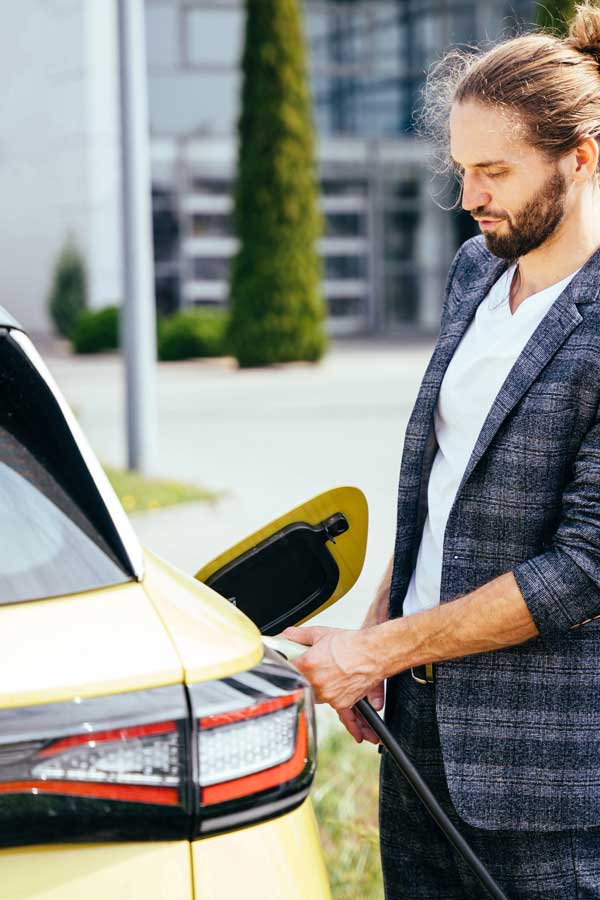How drivers can prepare for the 2030 phase-out of new petrol and diesel vehicles
Article seen in Daily Express, MSN, Chronicle Live, Birmingham Live and Wales Online.
As the Government looks to deliver on its manifesto promise, the motor industry is being consulted over how the phasing-out of new petrol and diesel cars by 2030 will work, and some drivers may be wondering what a revised deadline could mean for them.
This article looks at how drivers can prepare for the expected 2030 phase-out deadline and what they should consider before switching to an electric vehicle (EV).

Will a revised deadline mean I need to switch to an EV before 2030?
Andy Wolff, Commercial Director of Zenith’s Corporate division explains, “There is no right or wrong answer for when drivers should switch to an EV – the 2030 deadline will simply mean that no new petrol or diesel vehicles will be sold past this point. The consultation will refine which new hybrids can be sold alongside EVs, and second-hand petrol and diesel vehicles will still be purchasable post-2030, so the transition will depend on each driver’s circumstances, and factors such as how long they’ve had their current car.
For drivers who are not already enjoying the benefits of an electric vehicle, the deadline creates a great opportunity to begin learning more about EVs and to think about the timeline of their own transition.
If you’re planning on getting a new car in the next few years, you should consider whether it makes sense to purchase a petrol or diesel vehicle that will be phased out, or if you should opt for an electric vehicle instead.”
What are the purchase options available for electric vehicles?
Andy Wolff says, “There are several ways to purchase an EV, so it’s important to find the right option for you. Some of the most popular options are:
- Outright purchase
EVs generally have a higher purchase price than petrol and diesel vehicles, so you may need to spend more initially, which might not be an option for everyone. However, despite this initial higher spend, the long-term running costs of an EV can be lower, providing ongoing savings on servicing and maintenance costs. As well as this, electric charging at home is usually cheaper than traditional fuels.
- Personal Lease
If you are someone who likes to have the latest technology, leasing an electric vehicle will give you the option to upgrade to a newer model with the most up-to-date technology once your fixed term ends. EV technology is rapidly advancing, so this method can also make sure you are benefiting from what the newer models can provide, such as increased range, as well as things like maintenance being included in your package.
- Salary Sacrifice
Many employers offer salary sacrifice schemes where you can lease an EV through them, with an agreement with your employer that payments will be taken directly from your gross salary. This is one of the most cost-effective ways to own an EV, as these schemes are typically all-inclusive of breakdown cover, servicing, maintenance etc.”
Andy Wolff continues, “There are also several government grants and schemes that can help you save money when switching to an EV, including EV charge point grants for renters or flat owners, and tax savings for company car drivers. Waiting for the 2030 phase-out to come into effect may see you miss out on these.”
What do I need to know before driving an EV?
Andy Wolff explains, “Whether you rent or own a property, understanding your options for home charging is crucial. Most EV drivers install a dedicated charger, typically rated at 7kW, which offers fast and efficient charging.
The UK also has a rapidly expanding network of public chargers, with government data showing the number of charging points has increased by 49% since April 20231. Businesses are also being encouraged to provide EV charging points, so drivers may be able to rely on workplace charging as an alternative.
Driving an EV can also require some adjustment if you are used to a petrol or diesel vehicle. Some useful things to know include:
- EVs use regenerative braking, which slows down the car as you ease off the accelerator, sending energy back to the battery. This can feel different from conventional brakes but isn’t cause for concern.
- Electric vehicles are much quieter than other cars, which can be disorienting at first. Be extra cautious in pedestrian-heavy areas, as people may not hear you coming.
- Unlike petrol and diesel vehicles where you wait for the fuel gauge to be near empty before refuelling, EVs take a bit more forward planning. It’s best to incorporate charging into your driving routine, to ensure you always have the range you need.
- Route planners designed for EVs highlight charging points along your route and are handy for peace of mind on longer journeys.
- While you may be used to shopping around for the best fuel deals in a petrol or diesel car, there are still ways to save money with EV charging. Take advantage of lower electricity tariffs by charging your EV during off-peak hours.”
Andy Wolff concludes, “While the expected 2030 phase-out and switch to EV may seem daunting for drivers, our EVX report found that over 75% of existing EV drivers wouldn’t go back to petrol or diesel vehicles now they have made the transition to electric.
The most important thing is to do your research and base decisions on your circumstances and requirements. Making sure to use reputable sources to avoid any misinformation will make this process run smoothly, and help to establish if switching to an electric vehicle is right for you.”
External Sources
1 electric vehicle public charging infrastructure statistics april 2024.




